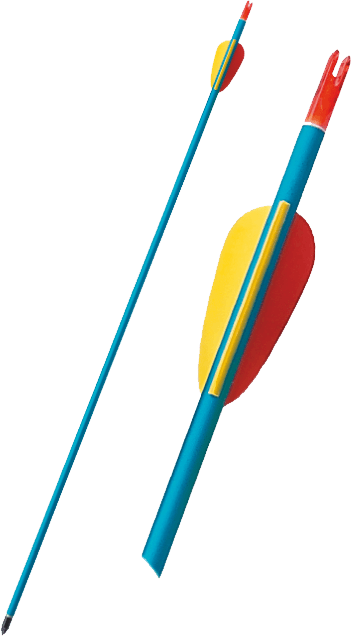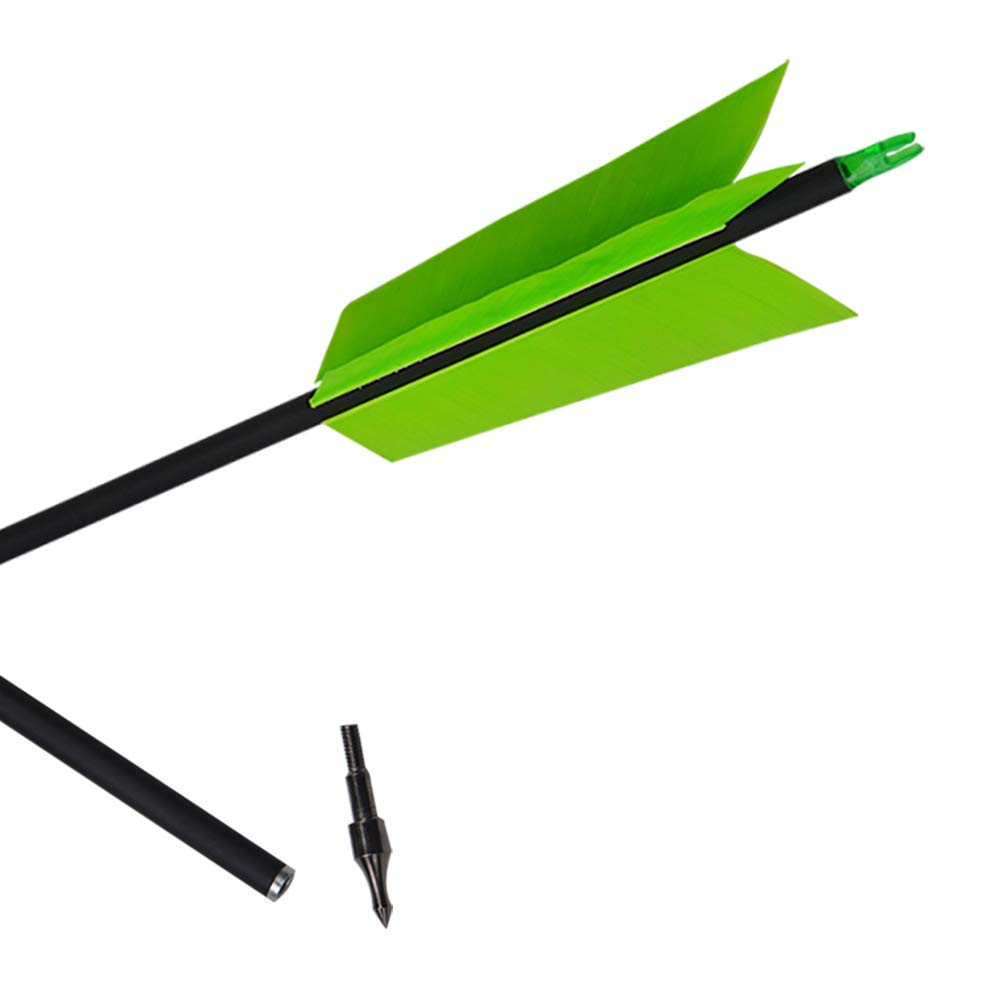Have you ever wondered how many kinds of arrows you can use for archery?
There is no question that every single archer in this world shares the same passion for their ammunition. Although arrows are unlike any other form of ammunition,
Today, we are going to be talking about the different types of arrows available. We will go over the basics of their purpose, their build and the materials used to create them for all kinds of purposes.
The different materials
There are different types of arrows for all kinds of purposes. The materials to build the arrow shaft are usually different types of woods, but these are not durable and they easily break, therefore the use of aluminum or carbon for the shafts is becoming quite popular. Aluminum is lighter than wood but heavier than carbon, so these are definitely things that you need to take into consideration when you purchase your arrows.
All of these arrows have their own measurements for optimal performance. This means that wooden arrows, carbon arrows and aluminum arrows are never going to have the same length and diameter. There are very specific measurements for specific archery purposes, so this is a topic that requires a whole book to cover properly. While it might sound daunting, it can be quite fun to get into this in detail.
Start with a cheap arrow
You can find arrow charts that can help you understand the many differences that come with each arrow type, but the best thing to do is to simply buy cheap arrows and get a feel for the basic process of shooting. There is no need for you to get too technical with this at first. Just have fun and learn as much as you can. Once you feel comfortable shooting your bow and your accuracy improves, you can start getting into these details and fine-tuning your equipment.
The parts of an arrow and types of arrow
The evolution of the arrow has been quite fascinating due to the many different types of arrows and parts that have been added and modified over the years. The length and diameter of arrows can be quite different depending on the use that you are looking to give to them.
Arrows have different parts that are all just as important. There are some arrows containing very specific parts and materials, but the most important thing to remember is that these parts all have a very specific purpose.
The nock

This is the small cut at the end of the arrow’s shaft. This allows you to keep the arrow steady on the string. Archers cut the shaft’s back end, but it can also be a plastic cover with the indentation for the string.
Do you want the nock like this?
Fletchings
These fletchings give the arrow more stability as it flies at high speeds. Fletchings use Synthetic materials now, but primitive versions used bird feathers. It’s usual to see three of these fletchings on arrows, but some use as many as six fletchings.
Do you want Fletchings like this?
The blunts
These type of arrows have no points and archers use them for the purpose of target practice as well as hunting games to stun the targets and avoid permanent damage.
Do you want the blunts like this?
The broadheads

This arrow design had warfare purposes as it had two to four blades that would spread. This would cause maximum damage as they hit their target. These are obviously not available to the public, but it’s great to get to know the history behind these types of arrows.
Do you want the broadheads like this?
The target points

People use these arrows for competitive purpose. They have the shape of sharp bullets. Their design is ideal to avoid damaging the targets too much and their small circumference makes this possible.
Do you want the target points like this?
The Bodkin points

These arrows served a purpose for war and they had very short rigid points. Their purpose was to have a greater range in the battlefield with more chances of penetrating enemy shields and armor.
Do you want the bodkin points like this?
The Judo Points
These are arrows for training and games. They come with spring wires. This allows the arrows to stick to the vegetation to avoid losing them if they miss their target.
Do you want the judo points like this?
The safety arrows

These are ideal for war games because people can shoot each other without harm. They are very wide and they have padded ends. You will find these arrows in many training centers. They are ideal for amateur classes for younger archers who are just getting started.
Do you want the safety arrows like this?
What is the average speed of an arrow?
It’s hard to say that due to the many factors that need to be considered. The draw weight of the bow, the energy profile, the limb material, the draw length and the type of fletching are important. The arrow weight is also essential to determine the average speed. Even the wind conditions and the general weather will have an effect on speed and distance.
For the purpose of giving you a good idea regarding the speed on an arrow. The recurve bow can shoot arrows as fast as 150mph, but the compound bow can take this up to 200mph. There are quite a few things to consider when you are looking to optimize speed. Compound bows are always going to provide better results in terms of speed.
The best arrows for beginners
There is no such thing as an ideal arrow for beginners, but there are arrows that are going to prove to be ideal depending on the height, arm length and strength of the archer. It’s better to give people a general idea of the different factors that are going to play a role in the results you get when you shot an arrow.
The one thing that we would recommend for people getting started is that they use long arrows. This allows them to get used to shooting without worrying about perfect form. Also, ask an experienced archer to help you find the best arrows for your bow.
Arrow shape and mass
There is a phenomenon called the Archer’s Paradox. This refers to the wiggling in an arrow on the exact moment that it comes out of the bow. They call the level of bendability on arrows the “spine”. If the bend is severe, the arrow is weak, but if the bend is slight, the arrow is stiff.
Same spine – better results
There are some archers who are able to achieve optimal accuracy regardless of the spine of their arrows. With that said, it is ideal for the archer to shoot arrows that have the same spine. Therefore, this is going to provide the best results when looking for accuracy. If an archer is used to a certain type of spine, it’s very likely that his accuracy will suffer if he decide to use a different spine. The truth is that even arrows with the same spine are going to have slight variations in accuracy, so this is why it’s so important to make sure you use the same spine.
Make it stiffer!
The more force a bow generates, the stiffer the arrow should be for accuracy not to be compromised. Having said that, this is one of the reasons why such a large number of archers prefer the use of stiff arrows. This is very common when they use compound bows. The hardness is important because they generate a larger amount of force when shooting the arrows.
The length does matter!
You also have the length of the arrow and it needs to be longer than your draw length. A length indicator is an excellent tool and it provides the ideal arrow measurement based on your draw length. The rule is that experienced archers should fire short arrows. This is important because they pose more danger when they can go past the bow handle.
The diameter and straightness of an arrow are also going to be important. The weight is also an essential consideration depending on the kind of shooting you will be doing. Both the weight of the arrows body and the weight of the tip will have an effect on the accuracy and the distance.
The shape and the mass are key factors for good shooting. If you want to learn more, there are plenty of videos online explaining this in detail.
Final thoughts
You might feel like arrows are a complex topic that seems a bit overwhelming. Just ask the person at the archery shop to guide you. This is often the best way for beginners to get started. These are specialized shops and you will find experienced archers helping customers with their questions. Don’t be afraid to ask and you will get the help you need.
I hope that this guide gave you a better understanding of the different types of arrows available. Also about the materials used to make them. There are plenty of options to choose from and some of them have specific purposes. Ideally, you will be looking into this in detail once you get a hang of the basics of archery.
See Also: Famous characters that use bow and arrow


